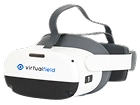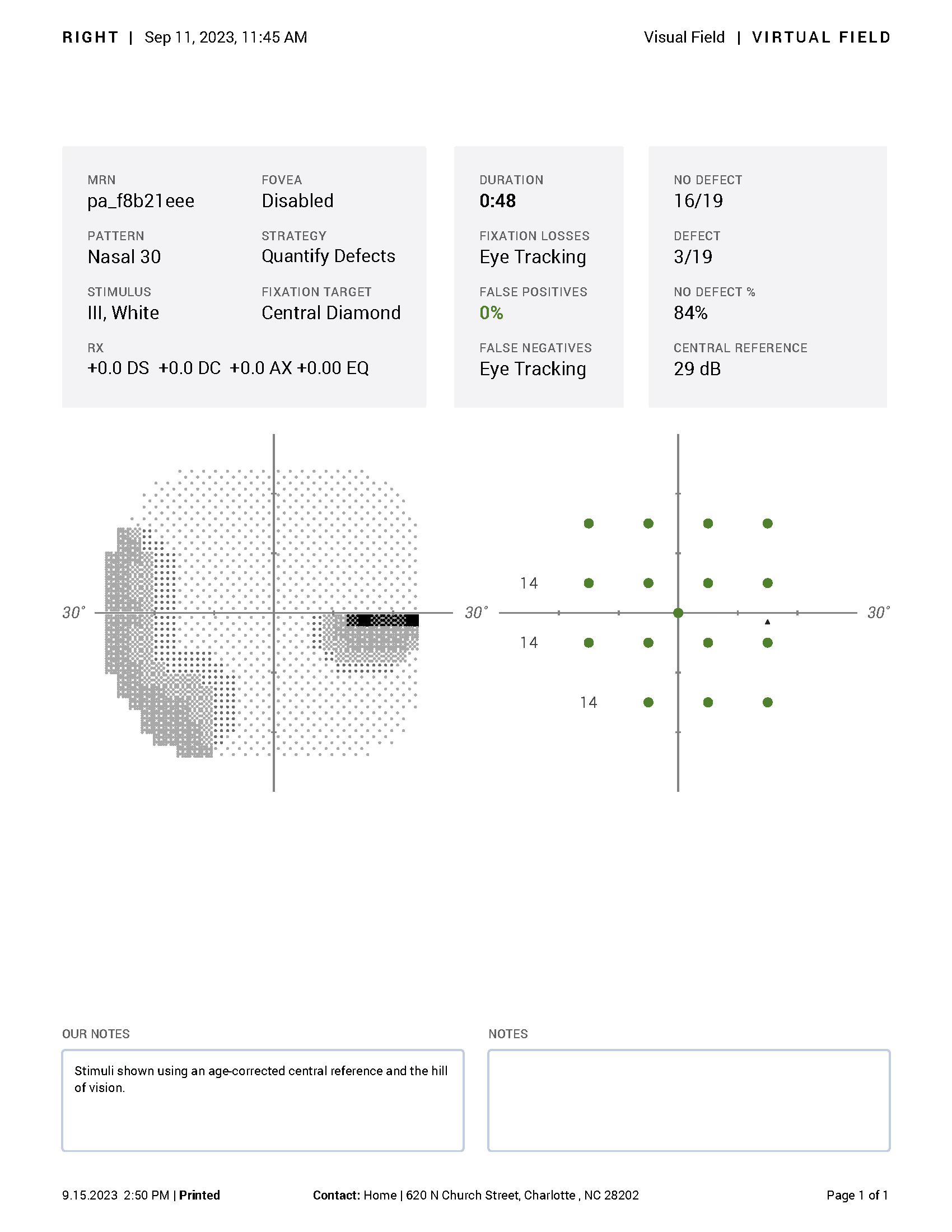Even patients who notice changes in their vision might not realize they have blind spots in their nasal peripheral area. This is why the N-30 visual field screening is an essential first step for detecting early glaucomatous damage and neuro-ophthalmic conditions. Vision loss in this area could be an early sign of glaucoma, retinal disease, or optic neuropathy. These conditions often go undiagnosed until significant damage has occurred, but can be identified sooner with the right targets. The N-30 test can help uncover these hidden conditions. It focuses specifically on the central vision plus nasal targets and detects defects that might be (literally) overlooked.
Virtual Field makes it simple to shift the target focus for a fast, efficient, and more comfortable patient experience with accurate test results uploaded directly to your EHR. Our first-of-its-kind headset technology eliminates the need for bulky perimetry machines, reduces test time, and helps you deliver more accessible exams for all your patients.
N-30 Visual Field Exam Overview
The N-30 visual field test uses frequency doubling technology to examine 19 points within the central 30-degree vision radius. This exam functions as both a glaucoma and neuro visual field test, especially effective for early detection of optic nerve dysfunction and neurological deficits.
In order to test nasal peripheral vision, the fixation point is shifted by 10 degrees after all other points have been tested. This assessment is especially important for early glaucoma screenings and for revealing neurological conditions.
The N-30 is quick to perform, so it’s a popular choice for busy practices. To make the test even faster and more accurate, Virtual Field’s patient-friendly headset and advanced algorithms can cut down exam time by up to 50%. This way, you can support more patients daily without sacrificing testing accuracy. As a portable N-30 perimeter, Virtual Field allows you to screen for early field loss without the limitations of traditional tabletop devices.
Academic references and clinical validation
This study evaluated the effectiveness of the N-30 test in detecting glaucomatous visual field loss and highlighted its diagnostic accuracy.
Research comparing the N-30 and C-20 indicated that they both have similar sensitivity and specificity in detecting glaucoma, but the N-30 offers broader central field assessment.
Virtual Field is proud of its commitment to the highest security and quality assurance standards. We are SOC 2 Type 2, HIPAA, FDA, and Health Canada compliant.

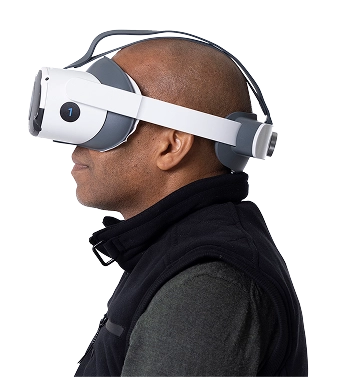
30 days free.
No strings attached.
We are confident you’ll love Virtual Field just like the 2,000 doctors who have already made the switch.
The N-30 Visual Field Exam at a Glance
Early signs of glaucoma, retinal disease, or optic neuropathy can hide in the nasal field, but the N-30 allows you to uncover these conditions earlier and intervene more effectively. This test excels at providing fast routine screenings with high sensitivity to these specific visual field changes. Compared to other exams, the N-30 may be less affected by refractive error, so it’s reliable and practical. But because the N-30 focuses primarily on the central 30 degrees, it’s not ideal for full-scope testing or identifying other kinds of peripheral visual field loss.
As part of the Virtual Field N-30 screen, this exam is especially useful in high-volume clinics or mobile environments where patient comfort, speed, and diagnostic precision are critical.
Pros and cons of the N-30 Exam
The pros and cons that follow can help guide you toward the ideal scenarios to incorporate this test into your patients' diagnostic assessments.
Pros
The N-30 effectively detects glaucomatous damage, especially among those with normal visual acuity and no obvious structural changes.
The N-30 is ideal for initial screenings and identifying early signs of visual field loss.
It only takes seconds to perform this test using Virtual Field. This speedy exam fits into most practices’ schedules, and because it doesn’t take long, this test may have better patient compliance.
Cons
Patients may become fatigued or irritated by the frequency-doubling technology’ flickering stimuli.
The N-30 doesn’t assess the full peripheral visual field, so it doesn’t provide as much insight as other tests like the 24-2.
This test is better for initial screenings than for progression monitoring.
List of Ocular Diseases Monitored and Diagnoses Identified by the N-30 Visual Field Exam
Glaucoma
In glaucoma, nasal step defects often appear first, and the N-30 is best known for detecting these early signs. This testing protocol can help improve early intervention and slow glaucoma progression.
Optic Neuritis
The test can reveal central visual field defects associated with optic nerve inflammation, supporting early diagnosis and management.
Ocular Hypertension
Patients with high intraocular pressure may be at risk for developing glaucoma, so the N-30 can be used to screen for defects.

60+
Macular Degeneration is the leading cause of vision loss in Americans aged 60 and older
2.5M
AMD affects 2.5 million Canadians
Retinal Vein Occlusion
Branch retinal vein occlusion (BRVO) and central retinal vein occlusion (CRVO) can cause localized or widespread visual field defects. The N-30 can detect relevant abnormalities in screenings and follow-up exams.
Macular Degeneration
Age-related macular degeneration usually presents with blind spots in the central vision. The N-30 examines more than the nasal periphery, so this may be a good all-purpose exam to screen a wide range of patients.
Optic Neuropathies
The altitudinal visual field losses characteristic of anterior ischemic optic neuropathy (AION) can’t hide from the N-30.
Other Conditions
The N-30 can also be used to monitor or diagnose:
- Diabetic retinopathy
- Retinitis pigmentosa
- Pituitary adenomas
- Toxic optic neuropathies
Example N-30 Report
30 days free.
No strings attached.
We are confident you’ll love Virtual Field just like the 2,000 doctors who have already made the switch.
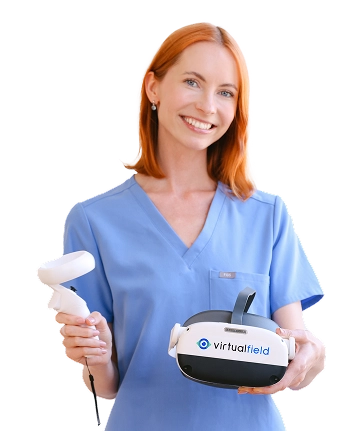
Billing and Coding for the N-30 Visual Field Exam
When billing for a portable N-30 perimeter such as Virtual Field, use CPT code 92082, which supports intermediate visual field examination.
The Medicare Physician Fee Schedule (MPFS) allows reimbursement between $19 and $60, depending on your location, setting, modifiers, and other factors.
When is the N-30 visual field exam required?
The N-30 test is particularly useful for patients at risk of glaucoma, those with ocular hypertension, or individuals experiencing unexplained visual disturbances. Since it focuses on the central 30 degrees of vision, it is ideal for detecting early glaucoma, optic nerve dysfunction, and certain neurological conditions that affect central vision. The N-30 may be performed annually or semi-annually to track changes, but as conditions progress, you may switch to more sensitive tests.
Is the N-30 visual field test required for driver’s licenses?
No, the N-30 test is not typically required for driver's license vision screening. Most driving eligibility assessments focus on peripheral vision and overall visual acuity. If a patient with specific medical conditions requires additional testing for driver’s licensing, you may need to administer broader exams like the FullField 120 or Esterman.
Start Conducting the N-30 Exam with Virtual Field
The N-30 test is fast, reliable, and relevant — especially when delivered through a portable N-30 perimeter like Virtual Field. Whether you’re using it for neuro visual field testing, stroke visual field assessment, or early glaucoma detection, this tool offers reliable, repeatable performance across clinical settings.
Traditionally, conducting the N-30 on bulky perimetry equipment takes longer and is uncomfortable for patients. Virtual Field is a patient-friendly experience with real-time data analysis for better testing accuracy and immediate insights. Available on the Virtual Field VF3 and VF3 Pro, the N-30 has rightfully earned its place as one of optometrists’ and ophthalmologists’ favorite go-to screenings.
Want all 23 exam guides in one place?
Download our comprehensive guide for 160+ pages of insights.
FAQs
1. What does the N-30 visual-field pattern test that a C-40 does not?
2. How quickly can I run an N-30 screen on a portable perimeter?
3. Is the N-30 test reimbursed?
4. What sensitivity does N-30 have for detecting a new hemianopia?
Ready to get started?
Schedule a demo or begin your 30-day free trial of Virtual Field to try our EOM exam in your practice.
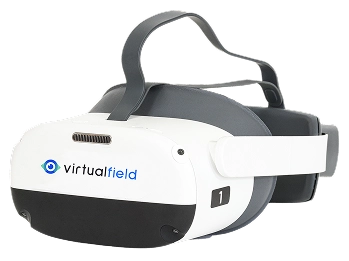
Questions? Contact sales@virtualfield.io talk to a Virtual Field expert today.

